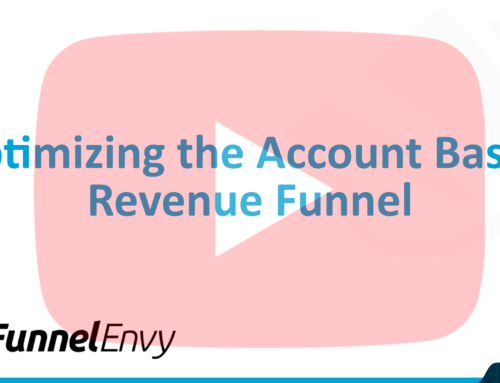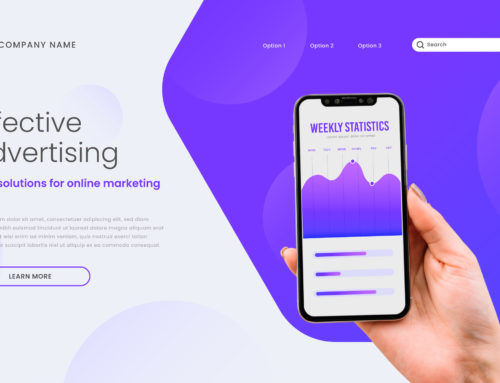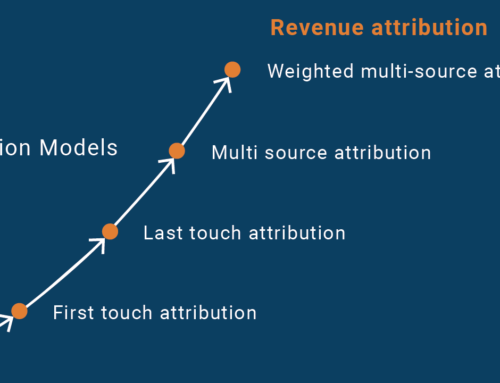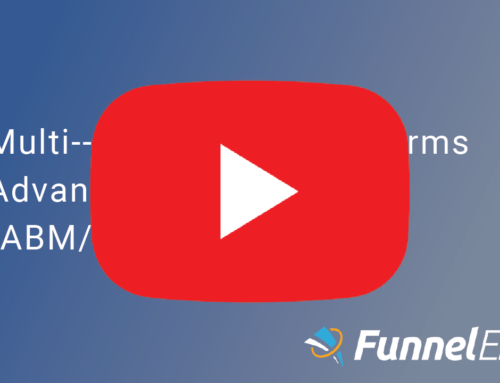Incorporating a drip campaign into your email marketing can help you nurture leads and deliver a better customer experience – all from the convenience of an automated platform.
Setting up a campaign for the first time takes a bit of effort, but it’s pretty straightforward. Ultimately, learning how to do this is just the first stepping stone to better email marketing efforts.
It’s the execution of your campaigns that will determine whether they’re worth the trouble. Autoresponders offer plenty of flexibility. There are tons of different types of email campaigns you can use to grow your business.
That brings us to a dilemma many marketers face: they get all excited about the potential of drip campaigns, but the sheer number of available options keeps them from ever getting started.
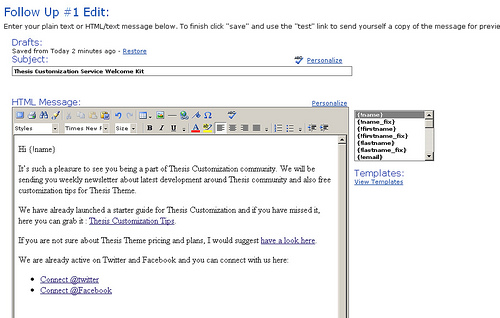
Photo Credit: denharsh via Compfight cc
Photocredit: Deathtostock
An Overwhelming Number of Possibilities
Relying on user behavior or designated time intervals (instead of just emailing whenever the mood strikes you) opens up a plethora of drip campaign options.
As you experiment and get more comfortable with automated email marketing, you’ll see how to combine different approaches to better appeal to your target customers. Maybe you’ll even discover a novel idea for a campaign your competitors haven’t ever considered.
But what about in the beginning? What can you do now to dip your toes into this new world and see some results?
Let’s turn to some of the most commonly used drip campaign strategies for guidance.
Some of the Most Popular (and Profitable) Drip Campaigns Around
Businesses have used the strategies outlined below effectively – and continue to do so – in a wide variety of niches. Not all of them will apply to your situation, but there will be at least several you can model when it’s time to start executing automated email campaigns.
You can mix and match these different strategies eventually, but it’s easiest to start with one, get familiar with it, and start racking up successes. Just a single effective email campaign can make a huge difference in your ROI.
Here are five effective drip campaigns you can try today:
5. Related Product and Service Recommendations
One of the most popular drip campaign strategies is to use customer behavior (in this case, their purchase history) to help tailor marketing efforts moving forward.
Making recommendations is a great way to maximize every email you send. Instead of relying on intuition, you turn to customers’ past behavior to help you predict which other products or services would interest them.
You can segment your customers into virtual “buckets” based on the products or services they bought and/or use the most. Then you can create tailored drip campaigns to make the most relevant offers possible.
Recommendation drip campaigns are great ways to up-sell and cross-sell customers, increasing their average lifetime value. There’s also less chance of irritating your subscribers because your offers are much more likely to be relevant to their needs.
The undisputed kind of recommendation emails?
Amazon. Here’s a screenshot from my inbox:
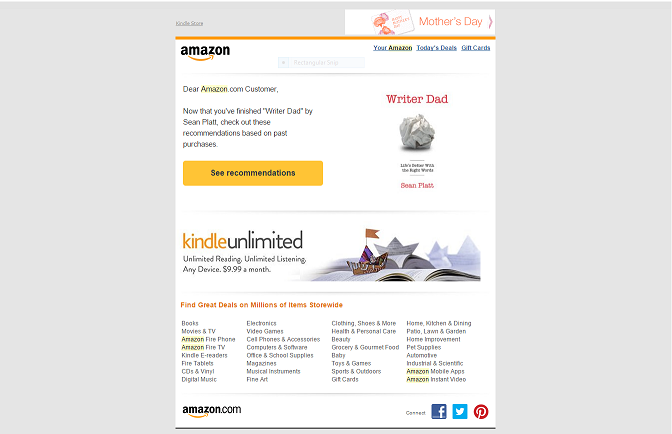
They use data about customer orders to deliver automated emails directing you to related products (which I tend to click on – and buy – way too often!)
You don’t need sophisticated recommendation engines like Amazon uses to put this strategy into action. You can start with a simple foundation: information about which customers bought which products and their usage patterns. Then you use your autoresponder platform to send out logically-related offers.
4. Subscription Renewals
If you’re operating a subscription business, how you handle renewals can make or break you. It doesn’t matter if your business is brick-and-mortar based (like a gym) or digitally-based (SAAS businesses).
Many businesses get customers signed up for automatic renewals and turn their attention back to acquiring more customers. But even if you’re using automatic renewal, it’s nice to give people a heads up whenever they’re about to be charged.
A simple email goes a long way to increase customer satisfaction and smooth out potential billing issues – like if someone changed credit cards – beforehand. This saves you time, keeps the customer happy, and steadies your revenue stream. Win win.
If you don’t offer automatic renewal (or customers choose not to use it), it’s especially important to stay in touch shortly before their subscription period ends.
What does an effective renewal email sequence look like?
It starts out with a series of emails (not just one) to keep you top-of-mind as the expiration date approaches. A clear call to action urging people to renew is necessary, but not sufficient for success. These are also great opportunities to remind customers of all the value they’re currently getting – and what they’ll miss out on if they don’t remain customers.
If a customer opts not to renew, you can sometimes retain them by offering a special incentive to reconsider, whether it’s a price discount, free upgrade, or some other motivator.
Themify, the company I use for paid WordPress themes, handles the subscription renewal challenge well (notice the special discount they throw in too):
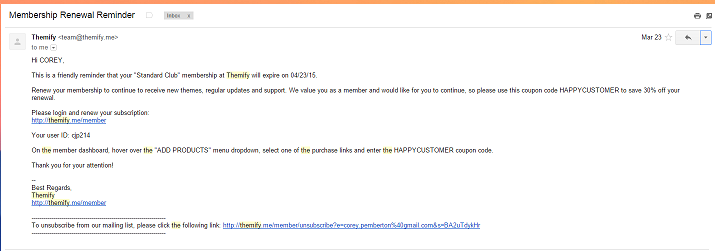
3. Confirmations and Receipts
When someone buys something, you email them documentation of that transaction.
Sounds simple, right?
The concept of confirmation and receipt emails is simple enough, but many businesses come up short in the execution. They send customers documentation of every transaction. But they aren’t taking advantage of how they’re presenting it.
Sending a basic receipt is one thing. But what if you used that receipt as an opportunity to make complementary offers and increase customer satisfaction?
Travel companies like Orbitz are masters at this. When you buy a plane ticket, they don’t just send you a basic receipt and send you on your way. They use the receipt to make related offers – things like hotel reservations and rental cars – where it makes a lot of logical sense. They make the most of every email.
Here’s a screenshot from when they tried to up-sell me on hotels on my trip to Bangkok:
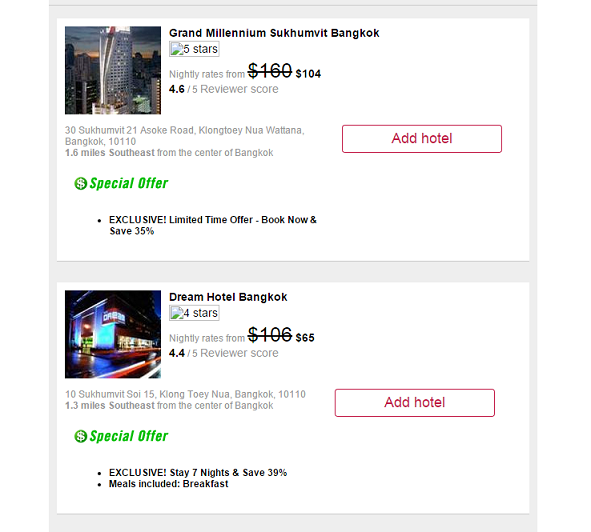
If you send a confirmation for something that’s time-sensitive (like a flight or upcoming concert), it’s always a good idea to email the customer a day or two before the event. That makes it easier for them to find the crucial information in crowded inboxes, elevating their customer experience and making it more likely they’ll buy again.
2. Customer Onboarding
“Onboarding,” the process where new customers obtain the knowledge and skills they need to make the most of your product or service, is a weak link for many businesses.
It doesn’t matter what you’re selling. If customers aren’t getting full value out of your product, they’re much more likely to jump ship. Churn goes way up, and customer lifetime value goes way down.
Some businesses post videos or put together a FAQ page to help with onboarding and call it a day. But automated emails accomplishes this in a more convenient, user-friendly way. Customers get digestible chunks of information sent straight to their inboxes on a schedule that makes intuitive sense.
You can onboard a few different ways, either to get new customers to appreciate and access the full value of what they bought, or recognize a lower-tiered option as so indispensable they invest in a more expensive product or service.
Either way, the deeper your product or service gets engrained in a customer’s workflow or daily life, the more likely they are to stick around. Onboarding drip campaigns can help with that.
One company who does this extremely well is Evernote:
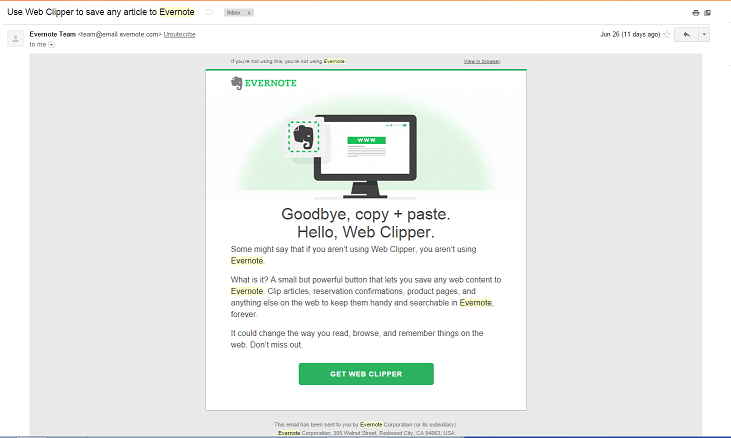
I just downloaded Evernote on my new desktop computer. Every few days, Evernote sends me an actionable email showing me how to use different features and get more value from the app.
1. Boosting Engagement
Ever notice those lulls in activity that usually end up with lost customers?
You don’t have to sit back and accept that!
An engagement drip campaign keeps customers interacting with your product or service consistently. The goal here: frequent contact points. The more often customers interact with you, the more likely it becomes a long-term habit.
You can use a visitor’s lack of on-site activity to trigger engagement email sequences. On the other hand, you can use high activity to trigger emails that make engaged customers even more enthusiastic.
The appeal in these emails can be positive or negative, rational or emotional. Often, companies use a mixture of these appeals to figure out what works best to get people coming back.
Some fitness and running apps use negative emotions like guilt to remind users how long it’s been since they last exercised. And a website I’m using to learn chess, Chesscademy, uses positive emotions to encourage even more engagement:
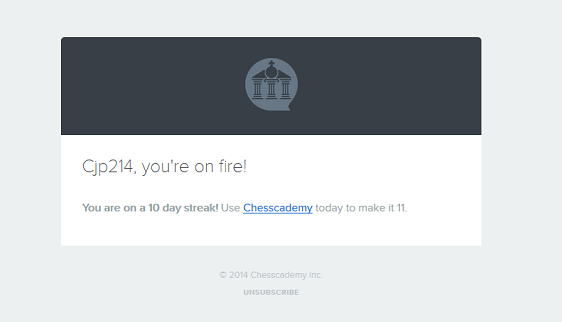
You’ll probably have to experiment with different appeals, call to actions, and incentives to get inactive customers to re-engage. But this is a process you can refine over time. Just getting started – reaching out when customer activity lags – puts you a world ahead of competitors who simply watch people slip away.
Your Turn
Immersing yourself in the world of drip campaigns can seem intimidating. With all the possibilities out there, it’s tough to know where to start.
The last thing you want to do is to try a dozen things at the same time and spread yourself too thin. That makes it almost impossible for any of your email campaigns to get off the ground.
Start by adapting one of these popular drip campaign strategies, and branch out to new strategies as you grow more comfortable. You can always mix and match strategies to resonate your target customers.
Do you use drip campaigns? Which type of campaign works best for you? Leave a comment below and share your experience!

